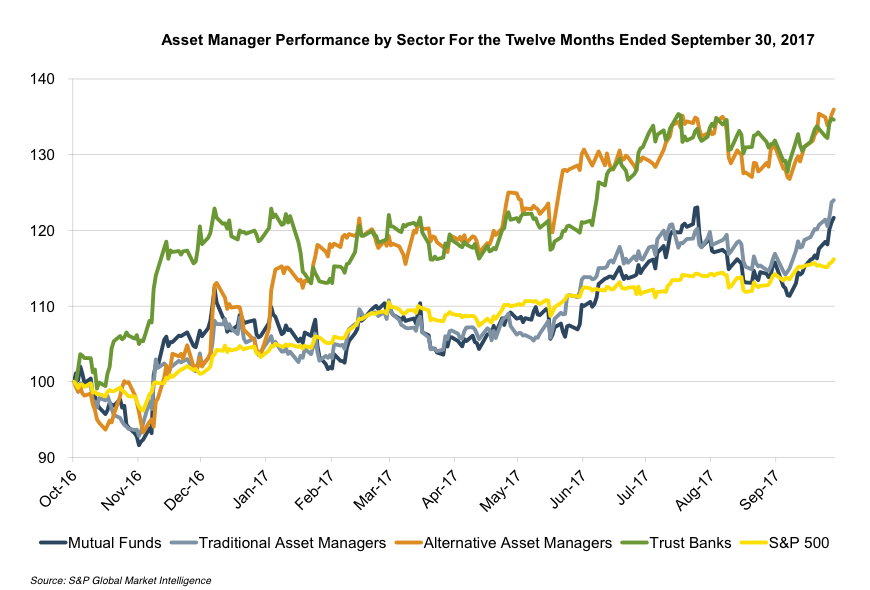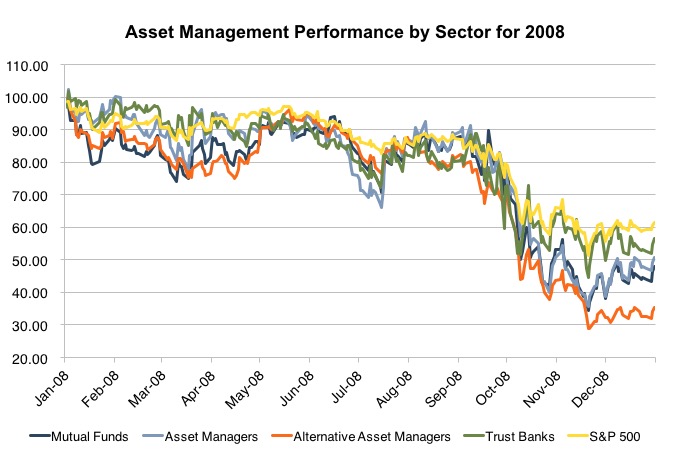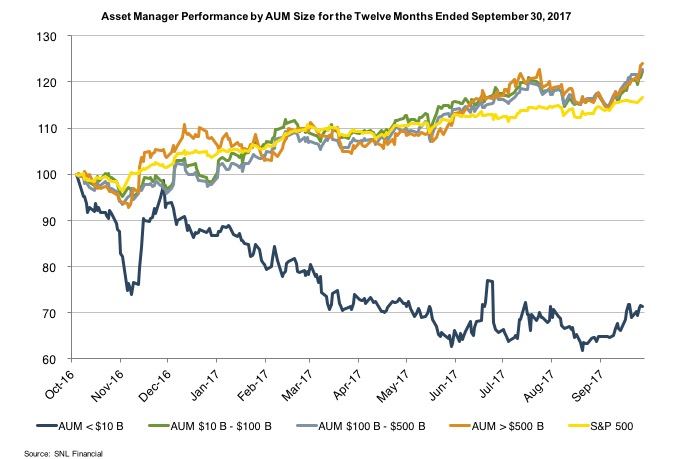Laissez Le Bon Temps Rouler! RIA Market Caps Peak Despite Headwinds
If you only followed the press surrounding asset managers, you’d think the entire industry was in serious trouble. Fee compression, fund outflows, regulatory overhang, rising costs, and a host of other issues have dominated headlines in recent years, yet the market doesn’t seem to care.
RIA stocks continue to climb relatively unabated as the market rally endured another quarter of (fairly) steady gains. This doesn’t necessarily mean the press is wrong about some of the problems facing the industry (admittedly, we’ve blogged about many of them), but it may be missing (or at least not reporting on) the real story – the combination of market appreciation and operating leverage have precipitated significant improvements in profitability since the Financial Crisis, eliciting a favorable response from shareholders despite everything we’ve been reading (and writing) about the industry.

The only problem is that market movements and operating leverage are a doubled edged sword. Corrections and bear markets typically lead to more precipitous declines in profitability due to the presence of fixed expenses in most RIA’s capital structure. We use 2008 as an example of how the market for RIAs reacts to downturns:

Taking a closer look at recent pricing reveals that trust bank stocks have outperformed other classes of asset managers, like mutual funds and traditional RIAs, as passive products and indexing strategies continued to gain ground on active management.
A rising yield curve portends higher NIM spreads and reinvestment income, and the market has responded accordingly – our custody bank index gained 35% over the last year, surpassing the broader indices and most other classes of asset managers.
Publicly traded alternative asset managers have also performed well in recent quarters, but are still reeling from poor investment returns over the last decade. The value-added proposition (alpha net of fees) has been virtually non-existent for many hedge funds and PE firms over this period despite the sector’s recent gains.
Once again, the RIA size graph seems to imply that smaller RIAs have significantly underperformed their larger peers over the last twelve months. The reality, though, is that this segment is the least diversified (only two components, Hennessy Advisors and US Global Investors, both of which are thinly traded) and certainly not a good representation of how RIAs with under $10 billion in AUM are actually performing.
Specifically, Hennessy’s weakness is largely attributable to recent sub-par investment performance from its Cornerstone Growth Fund, and US Global’s focus on natural resource investing has taken a hit from softening commodity prices. Most of our clients fall under this size category, and we can definitively say that these businesses (in aggregate) haven’t lost half their value since August as suggested by this graph. Other sizes of publicly traded asset managers have performed reasonably in line with the market over this period.

Market Outlook
The outlook for these businesses is similarly market driven – though it does vary by sector. Trust banks are more susceptible to changes in interest rates and yield curve positioning. Alternative asset managers tend to be more idiosyncratic but still influenced by investor sentiment regarding their hard-to-value assets. Mutual funds and traditional asset managers are more vulnerable to trends in active and passive investing. All are poised for another great year in 2017 as long as the market holds up in the coming months.
Mercer Capital’s RIA Valuation Insights Blog
The RIA Valuation Insights Blog presents a weekly update on issues important to the Asset Management Industry. Follow us on Twitter @RIA_Mercer.
 RIA Valuation Insights
RIA Valuation Insights 





